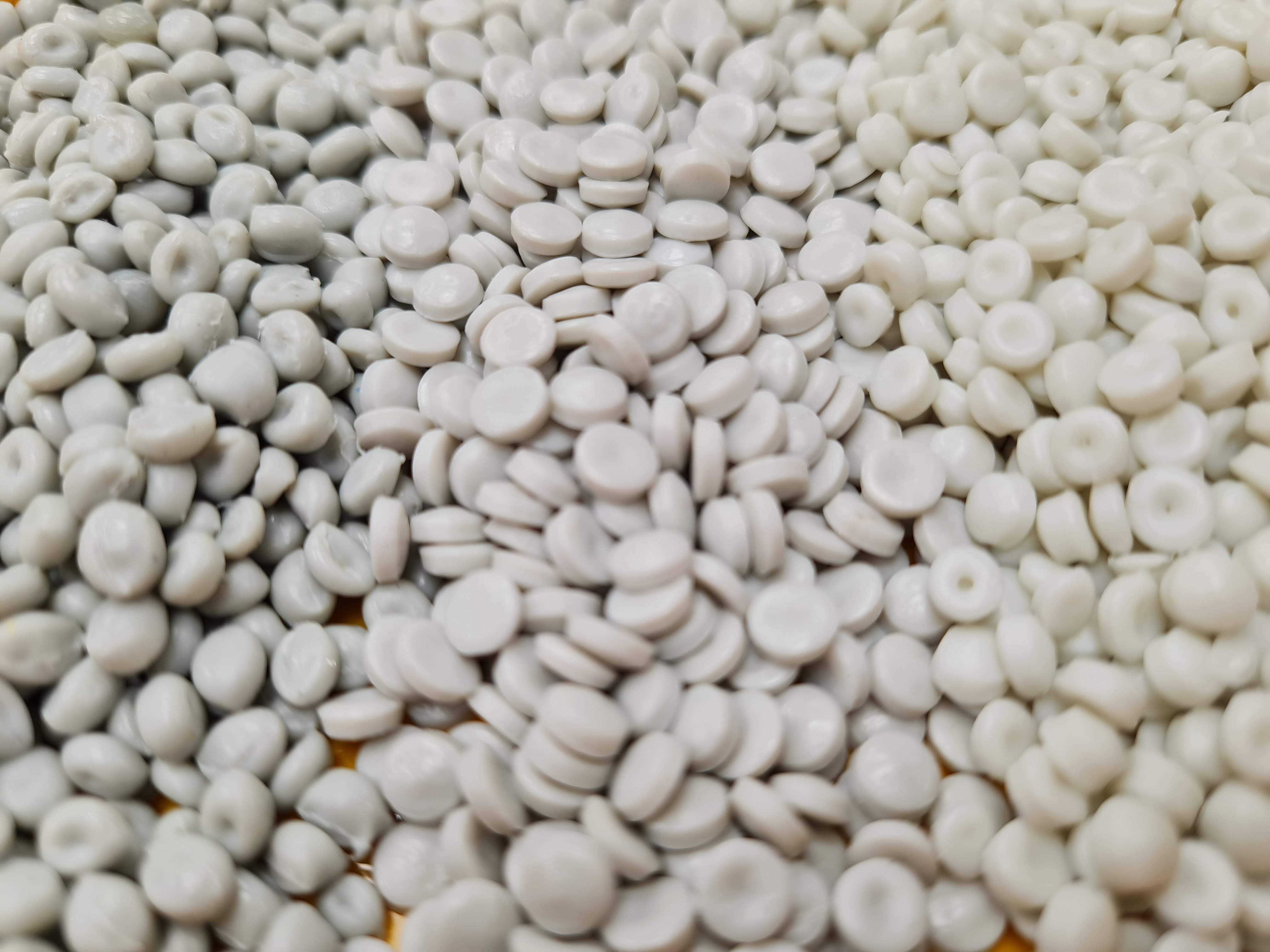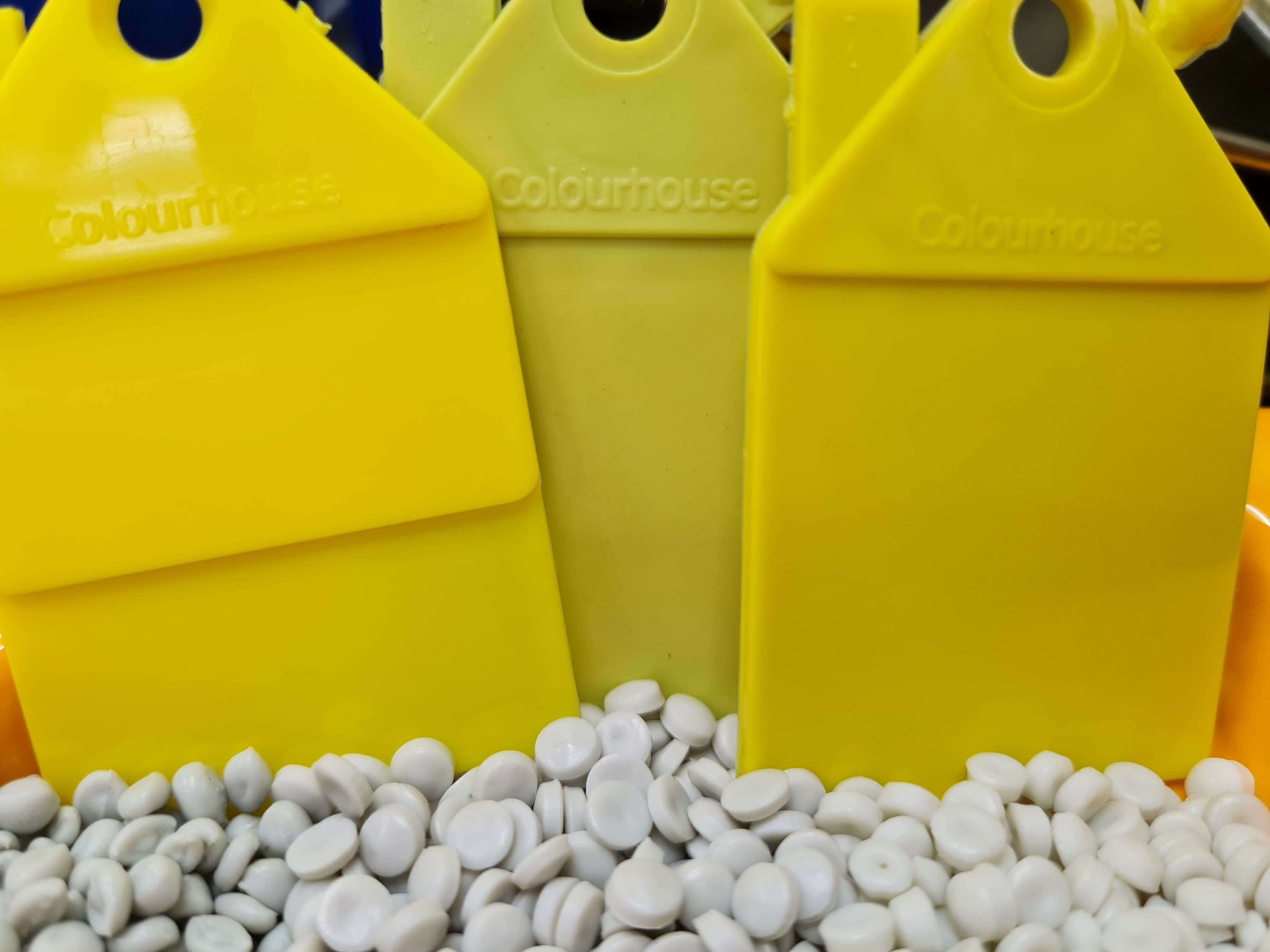
In 2022, the UK Government is planning to introduce a tax on plastic packaging that contains less than 30% post consumer recycled content. Colourhouse Masterbatch are ideally placed to enable its customers to meet these objectives, with several of our customers already achieving superb results.
With the help of Colourhouse Masterbatch Ltd, introducing recycled material into their existing products isn't as daunting as it may appear. Our Colour experts, are on hand to test, that your original products can incorporate the post consumer recycled polymer without changing the Colour of the finished product, enabling you to potentially minimize any future Plastic Packaging Tax implications.
Simply send a sample of your regrind material along with a sample of the virgin polymer and a record of the Colourhouse Masterbatch Product code you are using and we can do the rest for you.
If you prefer, we can also test any of our competitor products for you such as the Clariant Omni Range of Universal Masterbatches, although, if we do identify any variation to the produced plaques against the standard plaque you will need to speak with them regarding any potential changes to the formulations.

Above, are three samples of recycled HDPE polymer, supplied by three reputable polymer suppliers.
For the record of these trials, we tested these polymers using our very own True Universal Masterbatch Sherbet Lemon CUS1753.
First, we produced colour plaques based on our Masterbatch and 100% recycled polymer. Starting with the lightest polymer on the right, we repeated the process with the slightly darker second shade,
As the change between the two polymers was so varied we decided not to repeat the process using the third darker shade polymer. ( The CUS1753 standard is on the left)

Next we repeated the process with a mixture of 70% virgin polymer and the required Recycled content target of 30% recycled HDPE, the results from all three polymers can be seen below.

As expected, all three of the polymers looked a lot closer to the Standard when mixed with 70% virgin material, but, the difference in shade between each test was noticeable, with a very slight technical adjustment to the formulation, we could move the colour of the sample on the right close enough to pass our qc colour inspection, allowing our customer to achieve the required Colour and satisfy the recycled content of their finished product.
As the formulation would need a technical adjustment, we would issue a new product code for our customer. Hopefully this new formulation / product should allow our customer to satisfy the requirements in accordance with the new Plastic Packaging Tax coming into effect next year.
Findings
The initial enquiry was to produce a single masterbatch that could produce the same finished product in all three polymers, following our findings we believe the Cheapest option for our customer would be to adjust the formulation using the lighter Regrind polymer. We can look at achieving the same colour on the other two polymers, but the costs to achieve this may not be an option for our client as they both would require higher levels of pigments, resulting in higher cost implications.
Due to the variance between the three polymers, we feel that each polymer would require a different Masterbatch to enable the same colour in the finished article, on this occasion, we wouldn't be able to offer a single masterbatch to work for all three polymers.
Here at Colourhouse Masterbatch Limited, we feel that, now, may be a good time to consider Colour matching your existing products ready for the introduction of the recycled material.
It may also be a good idea to ask your polymer supplier to confirm if the regrind material will be consistent from Batch to Batch as any variance in opacity between batches may result in a variance of colour in the finished item.
If consistency cant be guaranteed we will be happy to repeat this process for you from batch to batch.
Remember, Introducing any new polymer into an existing product may not only affect the physical properties of the finished component but it may also be detrimental to the colour of your finished component.
Please ensure that you test all samples to ensure they are suitable for your requirements prior to purchasing production quantities.